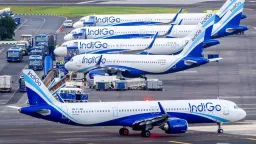How to Use Artificial Intelligence in Your Portfolio
Welcome to a cutting-edge journey in modern investing! In today's fast-paced financial landscape, harnessing the power of artificial intelligence (AI) has become a game-changer in optimizing portfolio strategies. This blog unveils the transformative role of AI in reshaping traditional investment approaches. Discover how AI-driven tools and algorithms revolutionize decision-making, empower investors with predictive insights, and pave the way for more informed, efficient, and adaptive portfolio management. Join us as we explore the dynamic fusion of technology and finance to unlock the potential of AI within your investment journey.

What is Artificial Intelligence?
Artificial Intelligence (AI) involves the utilization of machines to replicate human intelligence. Executed through computers and software, AI relies on data analysis and rule-based algorithms. This concept spans a diverse array of applications, ranging from sophisticated systems to a broad spectrum of functionalities. In the realm of investing and finance, AI takes various forms, leveraging the extensive data available on financial markets and prices to offer myriad opportunities for applications in investment strategies and trading.
Financial Data Analyzed by AI
AI has the capability to analyze a wide array of financial data, encompassing fundamental aspects like a company’s earnings, cash flow, and factors influencing stock prices. This involves evaluating stock fundamentals, which offer insight into a company's performance. Additionally, AI aids in technical analysis by processing data related to trading volumes and historical price trends.
AI Investing: Beginner-Friendly?
For beginners in investing, AI is highly accessible and beneficial. Robo-advisors, often the starting point for novice investors, heavily rely on AI. While some AI technology might seem complex, much of it is intuitive and user-friendly. For instance, in stock selection, AI-driven tools like stock screeners simplify the process of filtering stocks based on individual criteria. These tools replicate human intelligence but perform the task quicker, more efficiently, and with higher accuracy. Whether a beginner or experienced, utilizing these user-friendly AI tools can significantly enhance an investor's decision-making process.
Usage of AI in your Portfolio
Here are several methods everyday investors can employ artificial intelligence within their investment portfolios.
Stock Picking with AI
In today's stock markets inundated with data, artificial intelligence (AI) emerges as a powerful ally for investors. AI-driven stock screeners like ZACKS offer an efficient means to navigate through a myriad of data points. These tools allow investors to filter stocks based on various criteria, from fundamental factors like accounting ratios to technical indicators such as moving averages, aiding in informed stock selections.
Automated Portfolio Construction
Robo-advisors such as Wealthfront and Betterment revolutionize portfolio building by automating the advisory process. Through a guided questionnaire, these platforms leverage AI to match investor preferences and goals with tailored model portfolios. Utilizing AI algorithms, these portfolios are not only constructed but also dynamically managed, ensuring alignment with investors' risk profiles.
Trading Efficiency and Management
The evolution of trading tools empowered by AI enables swift and strategic market actions. Advanced order entry tools allow for criteria-driven trades and implement exit strategies, reducing the emotional impact on decision-making. AI's role here is crucial, helping investors set precise criteria for trade executions and manage exits efficiently.
Portfolio Optimization with AI
AI is a game-changer in portfolio optimization, offering tailored solutions based on individual risk tolerances and investment horizons. Employing modern portfolio theory, AI aids in identifying the optimal mix of stocks that aligns with an investor's risk-return preferences, aiming for enhanced returns while minimizing risk exposure.
Data-Driven Predictions
The realm of AI-driven algorithms attempts to predict market movements, leveraging vast datasets to make informed investment decisions. While not foolproof, these predictive models assist money managers in identifying market cycles or employing technical analysis tools for automatic trade decisions.
AI's Role in Risk Management
Beyond optimization, AI plays a pivotal role in risk mitigation within portfolios. Whether reducing overexposure to specific stocks or deploying automated options strategies, AI-driven techniques assist in managing risks associated with investments.
Embracing AI in portfolio management revolutionizes decision-making, enabling data-driven strategies to optimize investments and mitigate risks in today's dynamic markets.
How Robo Advisors Use Artificial Intelligence
Robo-advisors streamline the traditional advisory process by automating portfolio construction. By guiding users through a questionnaire aligned with their investing goals, timeframes, and risk tolerances, these platforms create portfolios tailored to individual needs. Utilizing artificial intelligence, robo-advisors not only score model portfolios based on user criteria but also employ modern portfolio theory to identify the ideal mix of individual stocks. Moreover, these automated portfolios are designed to rebalance automatically if the portfolio allocations deviate significantly from the targeted allocation.

Steps to Use AI in Your Investing Journey
Utilizing artificial intelligence in your investment journey involves several key steps, whether you're an individual investor or a professional trader.
Step 1: Define Your Financial Objectives
Begin by comprehensively understanding your financial goals. This serves as the cornerstone for shaping an investment strategy aligned with your needs.
Step 2: Choose Your Approach
Decide whether you'll leverage a robo-advisor for automated assistance or opt for self-directed investing. Robo-advisors use AI technology to manage portfolios, from questionnaire-driven assessments to ongoing portfolio management.
Step 3: Craft Your Investment Strategy
For self-directed investors, defining an investment strategy is crucial. You can use AI-driven models provided by robo-advisors or create a personalized strategy based on asset classes and stock preferences.
Step 4: Leverage Investment Tools
Utilize AI-powered tools like stock screeners to select specific stocks for your portfolio. These tools offer preset filters and criteria to aid in narrowing down suitable investment options.
Step 5: Portfolio Management and Refinement
Once your portfolio is established, consider using automated tools for position management, optimizing entry and exit points. Additionally, refining stock searches and leveraging tools like the efficient frontier can help in crafting a balanced portfolio for favorable returns with minimized risk.
Is investing with AI safe?
Investing with AI can be safe, yet it hinges on the quality of the AI tool and the user's proficiency. AI aids in identifying risky or secure stocks, but safety ultimately relies on an investor's choices regarding risk and reward. Employing modern portfolio theory helps in crafting a balanced stock portfolio that maximizes gains while mitigating risk, offering a safe approach to investment decisions. However, risks exist, including flawed algorithms and the impact of mass investor actions guided by the same AI data, posing potential hazards in AI-based investing strategies.
Also read: 10 Best Investment Plans for Girl Child in India
The Bottom Line
Whether directly engaged or not, the fusion of AI and investing is an enduring reality. Portfolio managers, fund handlers, and even investment advisors heavily rely on AI tools to assess risk, tailor portfolios, and guide investment decisions. The good news is that AI-driven investment tools are now widely accessible to individual investors.
For active investors taking a hands-on approach, AI plays a multifaceted role in managing portfolios, informing trade decisions, and handling trading positions. Staying informed about advancements in AI and investing remains crucial for these individuals. Assessing the adequacy of AI tools within existing platforms is vital. If lacking, investors may explore alternative brokerage platforms offering more robust AI tools or consider complementing their platform with third-party AI-driven software, such as utilizing separate stock screeners for informed stock selection.
Follow us on Instagram.









